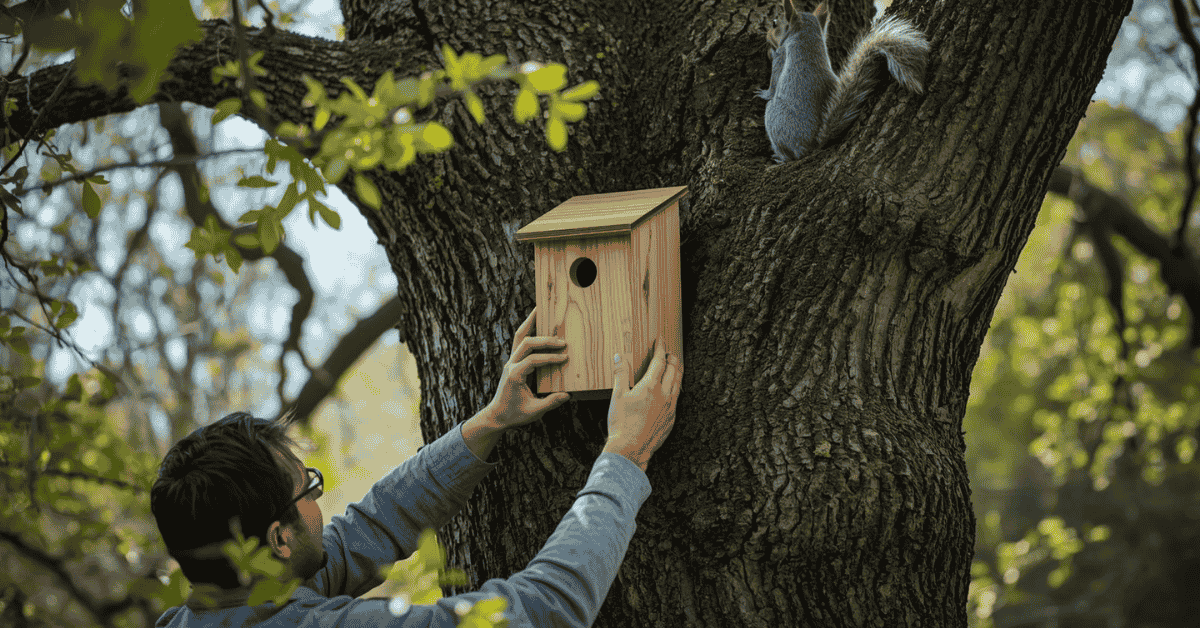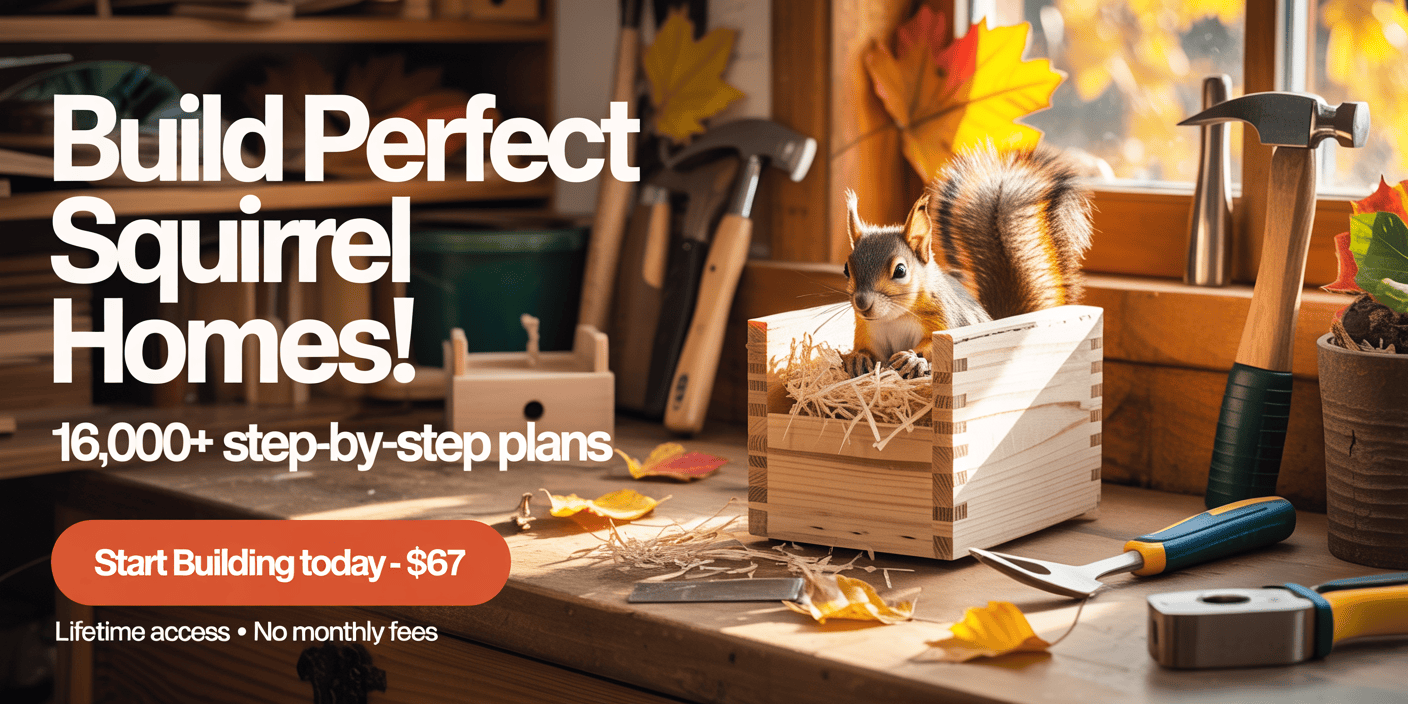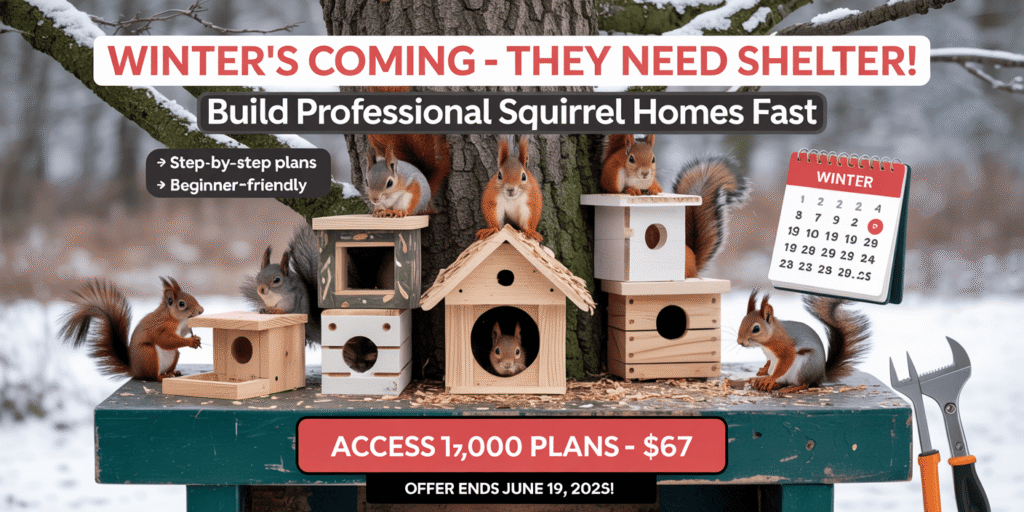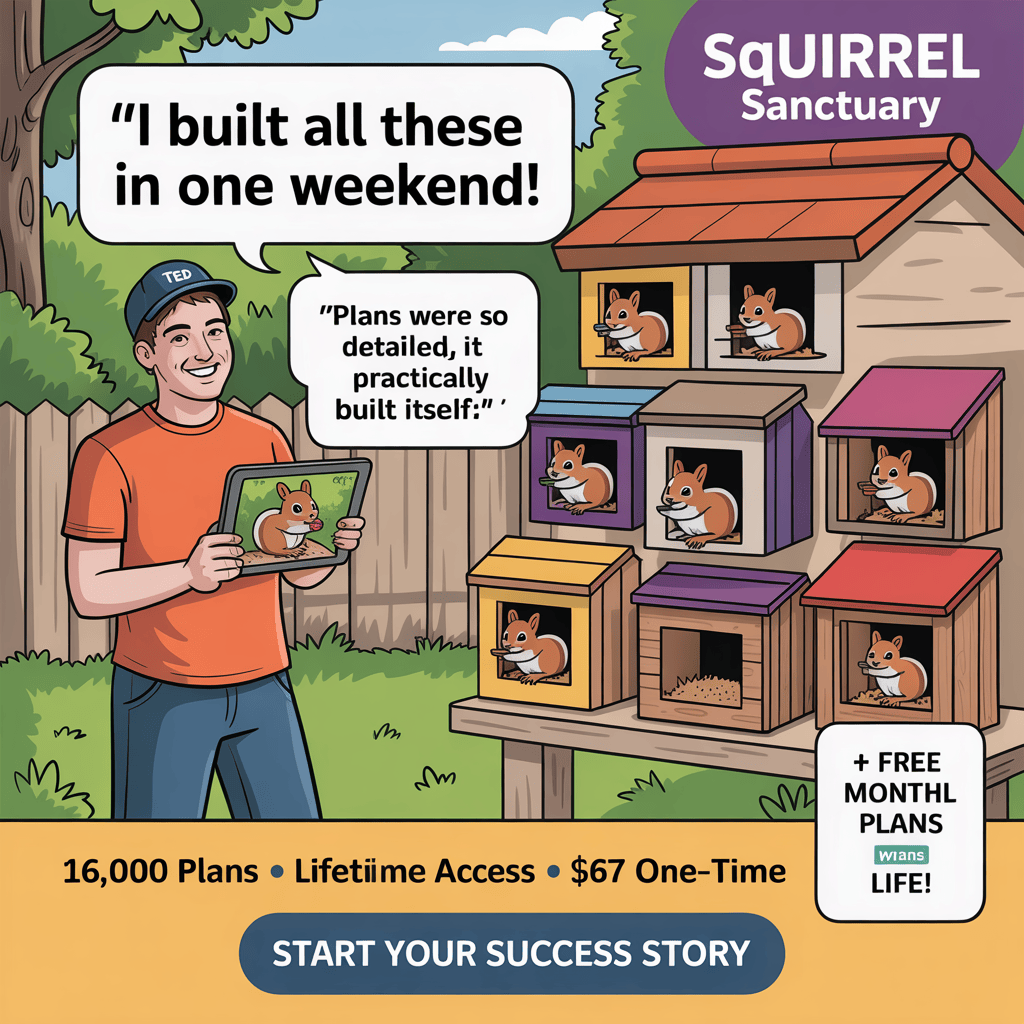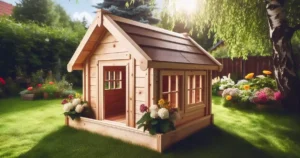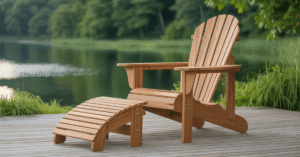Up to 60% of a squirrel’s year is spent nesting or travelling to nests. Yet, many backyard boxes sit empty because they’re built or placed at the wrong time and height. With the right seasonal plan, you can turn your yard into a safer, busier home base for local tree squirrels.
This guide blends wisdom from The Squirrel Board with lessons from Ducks Unlimited Canada and the Alberta Conservation Association. You’ll get a clear plan for where to place a squirrel nest box and when to build upgrades. This way, your backyard wildlife habitat will thrive in every season.
You’ll learn practical tips on where to place squirrel nest boxes. These tips align with real squirrel behaviour, such as nesting peaks in late winter and spring. You’ll also learn about summer heat relief, winter insulation, and how to keep red squirrels away.
Think of this as your field-tested map. It shows you where to place a squirrel nest box for shade and wind breaks. It tells you when to build house retrofits and what to measure for actual gains in use and safety. Build smarter, and your backyard wildlife habitat will reward you with steady, visible activity.
Key Takeaways
- Time your build for late fall through early spring to match nesting peaks and cold snaps.
- Mount boxes 8–12 feet high near trunk forks for stability, shade, and predator avoidance.
- Use insulated, double-wall builds with closable vents to handle winter and summer shifts.
- Add internal shelves and baffles, plus hardware cloth to deter raccoons and chewing.
- Avoid dense conifers to reduce red squirrel occupation and food caching in boxes.
- Track seasonal use, safety, and fledgling success to guide future placements.
- Apply these squirrel nest box tips and placement steps to strengthen your backyard wildlife habitat year-round.
Case Study Overview: How Seasonal Strategy Boosts Squirrel Houses in U.S. Backyards
Timing and placement are key to getting squirrels to use houses in your yard. Insulated walls for cold, vents for heat, and the right spot can make a big difference. This approach not only boosts box use but also keeps squirrels safe and supports a healthy backyard habitat.
Why a seasonal squirrel nesting guide matters for your backyard wildlife habitat
Seasons change what squirrels need. In winter, they want warmth and protection from the wind. In summer, they need cool air and shade. A seasonal guide helps you meet these needs, ensuring a safe and welcoming space for squirrels.
By planning for both cold and heat, you can find the perfect spot for a squirrel house. This spot should offer the right balance of light, wind, and cover. This makes your backyard a reliable home for squirrels all year round.
What we measured: usage, safety, and fledgling success across spring and winter
We tracked how often boxes were used in winter and spring. We also looked at how squirrels moved to cooler spots in summer. Safety was a big focus, checking for predators and ensuring easy access for squirrels.
We saw how insulation and vents affected box use. The right spot, 8–12 feet up with shade and wind protection, helped squirrels return. This spot also kept predators away.
Key outcomes: higher occupancy with optimal location for squirrel nest box
Boxes with double walls and vents kept warm in winter and cool in summer. The best spots were in afternoon shade, protected from wind, and had good drainage. These spots also kept red squirrels and their food caches away.
Predator guards, like tunnel entrances and tree baffles, helped keep squirrels safe. Early spring installs and cleanouts also encouraged repeat use. This made your backyard a safer and more welcoming place for squirrels.
Understanding Squirrel Nesting Habits by Season

Your backyard changes with the seasons, and so do squirrel nesting habits. Use a seasonal guide to adjust your builds and vents. Squirrels are active all year, so your approach must match the season.
Spring and late-winter nesting season: timing your build to protect baby squirrels
Finish your box and mount it before the first litters arrive. In late winter, insulated walls and vents keep warmth in and drafts out. Open vents as spring warms up, but keep the entrance tight.
Seal lids with bolts and washers during icy winds. This maintains stable temperatures without trapping moisture.
Summer behavior: preference for airy dreys higher in tree canopies
On hot days, squirrels prefer airy trees high in the canopy. These spots are cooler and less buggy. You should provide more ventilation.
Swap in high-vent inserts and crack roof vents early. Shade from the afternoon sun keeps the interior cooler.
Winter sheltering: communal use and insulated boxes in cold snaps
When it’s cold, squirrels share space. Thick bedding, gasketed lids, and sealed vents keep warm. Keep entries small and frames reinforced to resist gnawing.
Check that fasteners hold and drainage remains open. Dry bedding is as vital as insulation.
What a drey looks like and how it differs from a nest box
A drey is a ball of twigs with leaves and moss, built high in a fork. Summer dries are lighter; winter ones are bulkier for warmth.
A nest box is an enclosed wooden cavity. It’s kept at 8–12 feet for access and predator avoidance. Knowing the difference helps plan your squirrel nesting habits.
Where to Put Squirrel Nest Box: Best Placement for Climate, Cover, and Safety

You want a spot that feels natural and safe. Think about wind, sun, and access before you start. The best spot for a squirrel nest box is a stable tree, a calm area, and easy maintenance.
Choose a spot that mimics where squirrels nest in the wild. A solid trunk, gentle afternoon shade, and clean drainage keep the box dry and steady through storms.
Best tree placement for squirrel box: forked limbs near trunks for stability
Pick a mature deciduous tree and aim for a fork close to the trunk. This fork acts as a brace, keeping the box stable in the wind.
Mount a backer board to the trunk first, then slide the box on and off for seasonal checks. This method ensures reliability without harming the tree.
Squirrel nest box placement height: 8–12 feet for access and predator avoidance
Set your squirrel nest box placement height between 8 and 12 feet. This height is safe for you and keeps predators away.
Keep a clear path for squirrels to jump from nearby limbs. Avoid branches that predators can use to reach the entrance.
Orientation and microclimate: afternoon shade, wind break, and drainage
Angle the entrance away from the winds and the strong western sun. Afternoon shade keeps the interior calm, while a trunk or hedge can block the wind.
Add a roof overhang and a sealed lid to shed water. Make sure drainage holes are at the low points, and the entrance is slightly offset to keep rain out.
Avoiding conifer-heavy spots that attract red squirrels as box squatters
Stay away from dense conifer clusters that attract red squirrels. In mixed yards, choose hardwoods or spaced mixes instead of pine thickets.
This choice supports gray and flying squirrels while reducing the chance of cones filling the box. It keeps your decisions focused on airflow, light, and safety.
Use these cues as a quick field checklist. With the right tree, height, and orientation, you can succeed in most U.S. backyards.
squirrel nest box tips placement

Your box works best when design, airflow, and access match the season. These squirrel nest box tips help you decide where to place a squirrel nest box. They also guide you on how to refine the build for safety.
Focus on quiet shade, sturdy mounts, and the optimal location for squirrel nest box use in your yard.
Entry design and predator guards to deter raccoons and cats
Fit a tunnel-style entrance that extends at least a few inches from the face. Add an external predator block and an internal guard so a paw cannot reach inside. Use tight hole sizing and smooth edges to stop climbing cats and reduce raccoon leverage.
For summer, a double-layer hardware cloth frame over a small porch limits reach without blocking airflow. These squirrel nest box tips support safer access while keeping your chosen spot as the optimal location for squirrel nest box safety.
Ventilation under rooflines and closable vents for seasonality
Place slim vents under the roofline on the sides. Install covers you can open in heat and close in cold snaps. Back every opening with hardware cloth to prevent chewing and intrusion.
Match airflow to your climate and to where to place a squirrel nest box on your property. Add floor drainage and a weatherproof roof so bedding stays dry when storms hit.
Internal shelves/baffles as secondary predator protection
Build a full internal shelf with a small, offset access hole. This creates a thermal buffer and forces a turn that slows predators. In warm months, swap to a more open shelf to boost ventilation while keeping the offset path.
These squirrel nest box tips pair well with careful site choices. They strengthen boxes in the optimal location for squirrel nest box occupancy and safety.
Mounting systems that allow seasonal maintenance and cleaning
Use a sliding hanger on a pre-mounted cedar backer board. This lets you lift the box for quick cleaning, retrofits, and hardware checks. Tighten bolts and reseal edges during each seasonal service.
Plan routes for safe ladder work when deciding where to place a squirrel nest box. With smart mounts and steady upkeep, your squirrel nest box tips placement strategy stays practical and durable year-round.
When to Build Squirrel House: Seasonal Build and Retrofit Timeline

Plan your squirrel house builds and upgrades with a seasonal guide. This matches local weather and squirrel behavior. Work during the squirrel nesting season (spring/winter) to keep things comfortable and quiet.
Late fall to mid-winter: insulated builds for harsh weather readiness
Begin building before it gets really cold. Use double-wall panels, sealed lids, and closable vents to keep warm. In very cold areas, add insulation under a thin board to fight wind and keep temperatures stable.
Check the drainage and tighten any loose parts. Add a little bedding so squirrels can adjust it. This helps prepare safe shelters before storms hit.
Early spring: finalize placement before kits arrive and activity peaks
Install and secure boxes before squirrels start nesting. Choose the right height, shade, and orientation to avoid moving things later. This timing helps reduce stress on expectant mothers.
Open roofline vents on mild days, but keep it cozy at night. Focus on quiet installs and a few visits during this phase.
Summer: swap in high-vent “airier” inserts or upper decks
As it gets warmer, many squirrels prefer airy nests. Open vents, add screened upper decks, and use open-vent inserts. This creates a breeze while keeping predators out.
Keep the area shaded and ensure good drainage to cool down after storms. This summer retrofit keeps your squirrel house comfortable without constant upkeep.
DIY Squirrel Nest Box Tips that Work Year-Round
You can build squirrel houses that stay comfy all year. These tips help you make boxes that last and keep wildlife safe. Think about where you’ll place your box and what features it needs.
Double-wall construction with insulation for winter warmth and summer cool
Build a double-wall shell with a thin foam layer in between. This setup keeps the box warm in winter and cool in summer. Add vents near the roof to control airflow.
Hardware cloth frames to prevent chewing and enhance safety
Use 19-gauge hardware cloth for frames around the entry, roof vents, and interior edges. This stops chewing and keeps the box safe. For summer, add a double-layer panel to block raccoons.
Drainage holes and gasketed lids to keep bedding dry
Drill holes in the floor for drainage and add a roof overhang to shed rain. A rubber gasket and silicone seal keep the bedding dry. A textured roof mat helps with grip in wet weather.
Non-toxic materials: avoid cedar/cherry; favour pine and exterior-grade fasteners
Choose kiln-dried pine and avoid cedar and cherry. Use exterior-grade screws and fasteners. Add removable shelves and a slide-out baffle for easy cleaning.
These tips help you place your squirrel box in different areas. From shaded maples in the Midwest to wind-sheltered oaks in the Southeast. Built right, your box will last for years with regular checks.
| Feature | Why It Matters | Recommended Spec | Seasonal Edge |
|---|---|---|---|
| Double-wall with insulation | Stabilizes interior temperature | 1/2 in pine panels + 1/2 in rigid foam | Warm in winter, cooler in summer |
| Closable roofline vents | Controls moisture and heat | Maintains a safe opening size year-round | Open in summer, crack in mild winters |
| Hardware cloth framing | Prevents chewing and entry creep | 19-gauge, 1/2 in mesh, screwed battens | Maintains safe opening size year-round |
| Drainage + gasketed lid | Keeps bedding dry and mold-free | 4 floor drains; rubber lid gasket; silicone seams | Fast drying after storms in all seasons |
| Non-toxic pine build | Reduces odor and irritation | Kiln-dried pine; exterior screws/bolts | Reliable through freeze-thaw cycles |
| Modular shelves and baffles | Eases cleaning, extends service life | Removable interior parts with carriage bolts | Quick swaps between breeding and winter use |
| Porch with double mesh | Adds safe loafing space | Two-layer 1/2 in mesh porch panel | Airy summer resting area without risk |
Predator-Proofing and Placement Height: Protecting Baby Squirrels
Use a smart squirrel nest box placement height to balance access and safety. Aim for steps that make it hard for raccoons, cats, and snakes to reach. This is key to protecting baby squirrels and finding the best spot for squirrel nest boxes in busy backyards.
The best spot is 8–12 feet above ground. This height reduces predator pressure and keeps you safe on a ladder. Use a harness if needed, and place the mount on a sturdy trunk with afternoon shade.
External predator blocks and tunnel-style entrances
Fit a metal guard plate around the entry and keep the hole small. Add predator blocks on both sides to make it harder for predators to reach. A tunnel-style extension adds distance, keeping raccoons and cats out.
Mount the tunnel flush and smooth to prevent grip points. Check screws after storms and replace warped pieces before the next litter arrives.
Double-layer hardware cloth for summer “porch” concepts
In warm months, a screened porch can vent heat without exposing kits. Use double-layer hardware cloth for airflow and security. This acts like a mesh “double pane,” boosting airflow and security.
Inspect the mesh each season. Replace it if you see rust before nesting peaks. This supports protecting baby squirrels when activity is high.
Tree-mounted baffles and trunk spacing to foil raccoon reach
Install a smooth baffle below the box to block climbs. Keep the box away from nearby trunks or stout branches. A clear gap makes the best placement for squirrel nest box setups that aim to defeat leaping or grabbing.
Prune side branches that give easy access. Reassess after growth spurts; a safe squirrel nest box placement height can lose protection if a new limb spans the gap.
Site choice tradeoffs: reachable for maintenance yet safe from ground predators
Choose a site you can reach for cleaning without being too close. If you keep the mount at 8–12 feet, use layered defences like baffles, tunnels, and guard plates. This keeps your plan aligned with protecting baby squirrels while preserving access.
When possible, face the entry away from common predator routes, like fences and rooflines. With these details, you secure the best placement for squirrel nest box performance across seasons and maintain a reliable squirrel nest box placement height for routine care.
How to Attract Squirrels to a Nest Box Without Disrupting Local Ecology
You can attract squirrels and keep your backyard balanced. Use natural signs and quiet placement. Small changes in materials and location guide squirrels without causing trouble.
Use of natural bedding (moss, dried leaves) to mimic dreys
Start with a mix of dried leaves and moss on the floor. Add twigs and bark strips for squirrels to arrange. Refresh this bedding each season. It’s key to attract squirrels naturally.
Quiet corridors: placing boxes near feeding routes and cover
Find a quiet path in the trees where squirrels often pass. Place the box near a tree fork with leaves above. This spot is perfect for a squirrel nest box.
Managing competitors: clearing stored food and dummy nests
Look for food stores and dummy nests that block the entrance. Remove these to keep the box open. This helps all wildlife in your backyard without favoring one species.
Observation etiquette: minimal disturbance during active nesting
Make quick, quiet visits at midday. Avoid tapping the box or staying under the tree. If you need to adjust the box, do it gently and step back. Patience is key; a new setup may take time.
| Goal | Action | Ecology-Friendly Reason | Keyword Focus |
|---|---|---|---|
| Encourage fast adoption | Add dried leaves, moss, and fine twigs | Mimics natural dreys without artificial lures | Where to place a squirrel nest box |
| Reduce stress | Use shaded, wind-sheltered trunk forks | Cuts exposure and keeps traffic low | optimal location for squirrel nest box |
| Keep box usable | Clear stored food and twig blockages | Prevents clogging and cross-species conflicts | backyard wildlife habitat |
| Maintain low disturbance | Brief midday checks; quiet handling | Protects nesting success and natural rhythms | where to place a squirrel nest box |
🛠️ Build More Than Just a Squirrel Nest Box
Unlock 16,000 Step-by-Step Woodworking Plans and turn your DIY ideas into reality! From nest boxes to backyard furniture, Ted’s Woodworking makes projects simple and fun for beginners and pros.
👉 Get Instant Access for Just $67 »
Why Choose Ted’s Woodworking?
- ✅ 16,000+ ready-to-use plans with blueprints
- ✅ Beginner-friendly & pro-level projects
- ✅ Exact cutting lists to save time & money
- ✅ Lifetime access + free monthly updates
- ✅ 60-day money-back guarantee
Conclusion
For the best results, match the squirrel box to the season and location. Use double-wall pine, add insulation, and include closable roofline vents for winter. In summer, switch to open-vent or screened panels for better airflow.
Install boxes from late fall to early spring. This prepares you for cold weather and spring litters. It answers two key questions: where to place the box and when to build it.
Placement is key. Mount boxes 8–12 feet high on a forked limb near the trunk. Face the entrance toward afternoon shade and ensure a wind break. Keep drainage clear.
Don’t place boxes in dense conifer stands. This prevents red squirrels from squatting and caching food. These tips help you find the best spot for your box without disrupting your yard.
Always prioritize safety. Use external predator blocks, a tunnel-style entry, and double-layer hardware cloth on summer porches. Add a tree baffle and keep trunks or branches out of reach.
Use natural bedding like moss and dried leaves. Place boxes along quiet, covered routes. Remove stored food and dummy nests. Watch from a distance during active nesting to protect kits and keep behavior natural.
This approach is based on years of experience and advice from The Squirrel Board community. It also draws from Nuts About Squirrels in Minnesota and Ducks Unlimited Canada. Insights from Ark Wildlife add to the knowledge for U.S. yards. Follow these steps to know where and when to build your squirrel house for humane shelter.
FAQ
What’s the best placement for a squirrel nest box in a typical U.S. backyard?
Place your squirrel house on a sturdy tree fork close to the trunk. Aim the entrance toward afternoon shade with a wind break. Make sure the roof has overhangs and drainage holes to keep water away.
What is the optimal location for the squirrel nest box height?
Mount the box 8–12 feet above ground. This height helps avoid predators and ensures easy cleaning access. It’s a good spot for backyard squirrel boxes, just like for American Kestrels and Northern Saw-whet Owls.
Where should you avoid placing a squirrel house?
Don’t place the box in dense conifer clusters. Red squirrels might fill it with food. Instead, choose deciduous trees or mixed stands with enough space to avoid competition.
How do you attract squirrels to a nest box without causing problems?
Start by pre-seeding the box with dried leaves and moss. Place it along quiet paths with canopy cover. Keep disturbance low and clean out stored food to prevent it from filling up.
When should you build or install a squirrel nest box?
Build and mount the box from late fall to early spring. Finish the installation before spring kits arrive. This timing helps you adjust the vents for cold and warm weather.
How do seasonal squirrel nesting habits affect placement and design?
In winter, squirrels prefer warm, enclosed spaces and might share nests. In summer, they seek airy dreys higher up. Use insulated boxes with closable vents for winter and add ventilation or a screened porch for summer.
What’s the best orientation and microclimate for a squirrel nest box?
Choose afternoon shade with a wind break. Give the roof an overhang and add drainage holes. Keep the entrance out of the rain to improve comfort and reduce moisture.
How can you predator-proof a squirrel nest box?
Add predator blocks or a short tunnel around the entrance. Line vulnerable edges with hardware cloth. Use tree-mounted baffles and prune nearby branches to block raccoons and cats. Make the entrance too small for paws.
What are effective entry designs for raccoon-heavy areas?
Install an external tunnel-style guard and an internal predator block. If you add a summer porch, use double-layer hardware cloth to prevent raccoon access.
How do you ventilate a squirrel nest box for different seasons?
Use closable vents under the roofline. Open them in summer for airflow and close them in winter to keep warm. Use hardware cloth frames over vent slots to deter chewing.
What internal features help protect kits?
Fit an internal shelf or baffle with a small access hole. It creates a thermal buffer and a secondary barrier against predators. Swap to a higher-vent shelf in summer for better airflow.
What mounting system makes maintenance easier?
Hang the box on a sliding bracket or cleat attached to a pre-mounted cedar board. This allows for easy cleaning and repairs without disturbing the tree much.
What materials are best for a DIY squirrel nest box?
Use pine with exterior-grade screws and bolts. Avoid cedar and cherry. Double-wall the sides and roof with insulation for warmth in winter and cool in summer. Seal joints with weatherproofing.
How do you keep bedding dry inside the box?
Drill drainage holes in the floor, use a gasketed or well-sealed lid, and extend the roof with an overhang. A waterproof roof layer, like a silicone mat, sheds water and improves traction.
What maintenance should you schedule throughout the year?
Before spring, empty stored food, refresh bedding, and inspect hardware cloth, seals, and bolts. In summer, open vents and swap to airier inserts. In the fall, restore insulation and close vents to prep for cold snaps.
How do you manage competitors like red squirrels?
Choose placements away from conifers and clear bulky caches that block the entrance. Keep interiors tidy to prevent abandonment and improve seasonal occupancy.
What does a natural drey look like compared to a nest box?
A drey is a twig “football” in a fork or near a trunk, lined with moss, leaves, bark, feathers, grass, or pine needles. A nest box is an enclosed wooden cavity that you can insulate, ventilate, and predator-proof.
How can you measure success for your squirrel houses?
Track seasonal use, note any predator incidents, and watch for young at the entrance in spring. Record whether boxes stay occupied across years, especially through winter, when insulation and shelter matter most.
What are the quick wins for squirrel nest box tips placement?
Mount 8–12 feet high on a fork near the trunk, set in afternoon shade, and add a baffle below. Use a tunnel entrance with an internal shelf, pre-seed with leaves and moss, and keep vents season-ready. These steps raise adoption and safety quickly.
